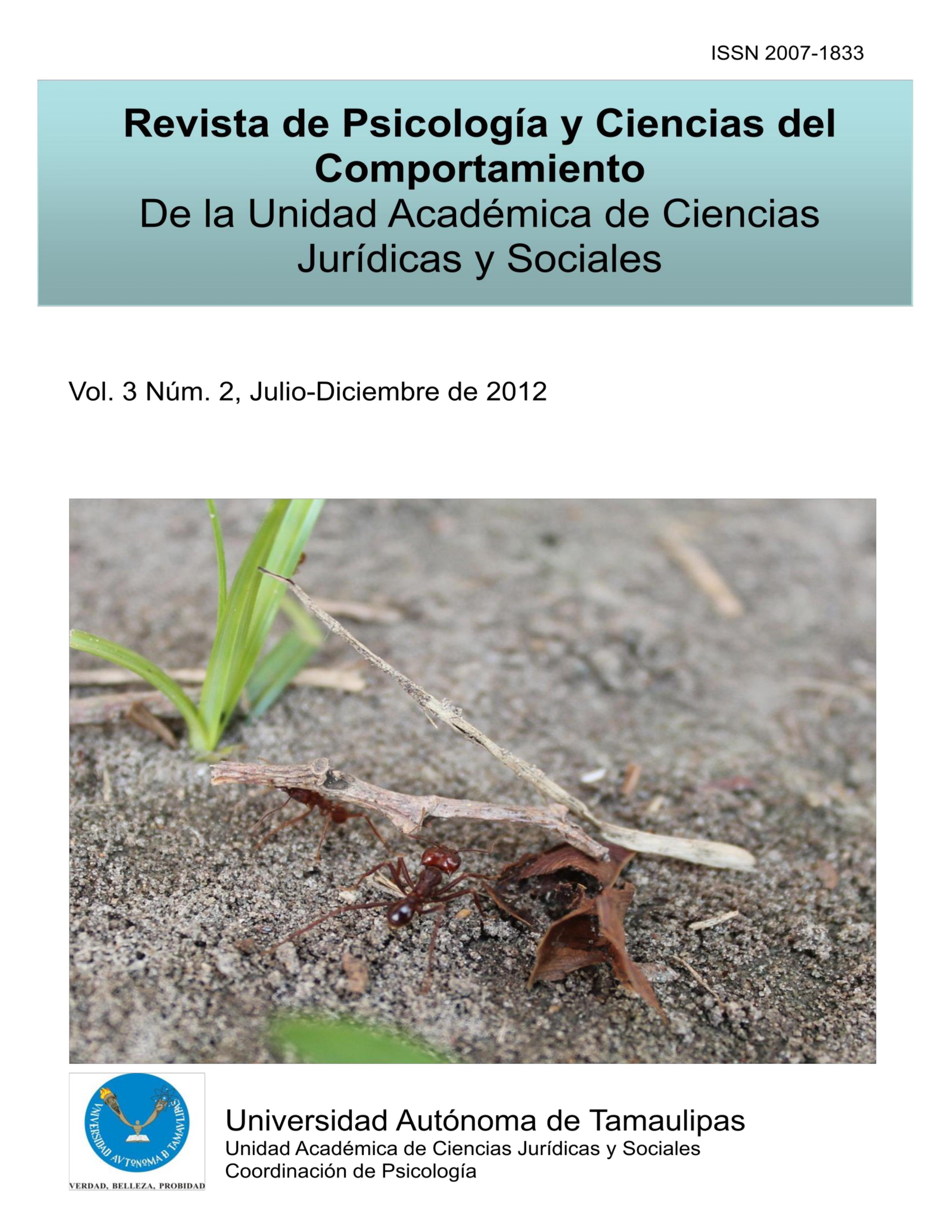Propuesta de una taxonomía sobre estilos de conducción de automoviles a partir de indicadores conductuales
Palabras clave:
taxonomía, estilos de conducción, indicadores conductuales, prevención vialResumen
El desarrollo de clasificaciones dentro de la ciencia es esencial, mediante ellas se define al objeto de estudio y en consecuencia se analiza, se puede concluir que en la base de todo conocimiento se encuentra una clasificación. El presente trabajo tiene por objetivo proponer una taxonomía de los estilos de conducción de un automóvil a partir del un gradiente de seguridad que es inversamente proporcional al riesgo a sufrir un accidente de tráfico, ésta clasificación se ha desarrollado en dos versiones, una general, considerando las dimensiones tradicionales del comportamiento humano (cognoscitivo, afectivo, ejecutivo o conductual), y otra en términos exclusivamente ejecutivos o conductuales. Se considera que estas clasificaciones pueden ser útiles en el desarrollo de herramientas para el estudio e intervención en comportamiento vial, a fin de obtener explicaciones y soluciones novedosas a los accidentes de tráfico, problema poco atendido por la psicología y las ciencias sociales en la región sur de Tamaulipas y el país.Citas
Egea Caparrós, A. (s.f.). El comportamiento humano en conducción: factores perceptivos, cognitivos y de respuesta. Cognición y Psicología Aplicada a la conducción de vehículos, Universidad de Murcia. Recuperado de http://www.um.es/docencia/agustinr/pca/textos/cogniconduc.pdf
Carbonell, E. (1995). Percepción por los usuarios de los factores de seguridad y de riesgo en la autopista. Facultad de Psicología Universidad de Barcelona. Recuperado de http://www.raco.cat/index.php/anuariopsicologia/article/viewFile/61280/88914
Carro P., E. H., Hernández C., M. G., Sahagún M., A. y Villalobos S., Z. A. (2012). Análisis de la conducción de automóviles en ciudad a partir de indicadores conductuales, en Memorias del 1er Congreso Nacional de Ciencias del Comportamiento: retos y alcances de la investigación conductual. Tampico, México: Universidad Autónoma de Tamaulipas.
Ferreira, A. I., Martínez, L. F., y Guisande, M. A. (2009) Comportamiento de riesgo, rasgos de personalidad y accidentes de carretera en estudiantes universitarios. European journal of education and psychology. Vol. 2, Nº. 2, 79-98. Recuperado de http://www.ejep.es/index.php/journal/article/view/23/pdf_29
Gómez, F. J. A., y González, I. B. (Julio, 2010). El papel de la personalidad y la ira en la explicación de las conductas de riesgo al volante en mujeres jóvenes. Anales de Psicología, Vol. 26, Núm. 2, 318-324. Recuperado de http://redalyc.uaemex.mx/redalyc/src/inicio/ArtPdfRed.jsp?iCve=16713079016
Instituto Nacional de Estadística, Geografía e Informática (2011). Estadísticas nacionales de accidentes de tránsito terrestres en zonas urbanas y suburbanas 1997-2009. Recuperado el 12 de enero de 2012, en www.inegi.mx
Instituto de Seguridad y Servicios Sociales de los Trabajadores del Estado (2005). Manual de manejo defensivo. Recuperado el 16 de junio de 2011, en http://www.issste.gob.mx/www/prestaciones/pensiones/Seguridad%20e%20higiene/D11/
Montoro, G. L., Roca, R. J., y Lucas, A. A. (2010). Creencias de los conductores españoles sobre la velocidad. Psicothema, vol. 22 (4), 858-864. Recuperado de http://redalyc.uaemex.mx/src/inicio/ArtPdfRed.jsp?iCve=72715515049
Pastor, G., Monteagudo, M. J., Pollock, D. (1999) Conceptualización y análisis psicológico del error humano en la conducción de vehículos a partir de los desarrollos recientes del modelo de habilidades, reglas y conocimientos. Anuario de Psicología, vol. 30(1),39-64. Facultat de Psicología Universitat de Barcelona. Recuperado de http://www.raco.cat/index.php/anuariopsicologia/article/viewFile/61411/88363
Soler. J. y Tortosa, F. (1985). Psicología y seguridad vial: Autores, temas y fuentes. Papeles del psicólogo, 21. Recuperado el 07 de marzo de 2012, http://www.papelesdelpsicologo.es/vernumero.asp?id=233
Tortosa, F. y Montoro, L. (2002). La Psicología aplicada a la selección de conductores. Cien años salvando vidas. Psicothema. 14(004), 714-725.
Descargas
Publicado
Número
Sección
Licencia
Aquellos/as autores/as que tengan publicaciones con la Revista de Psicología y Ciencias del Comportamiento de la Unidad Académica de Ciencias Jurídicas y Sociales, aceptan los términos siguientes:- Los autores/as conservarán sus derechos de autor y garantizarán a la revista el derecho de primera publicación de su obra, el cuál estará simultáneamente sujeto a la Licencia de Creative Commons Reconocimiento-NoComercial-CompartirIgual 4.0 Internacional. que permite a terceros compartir la obra siempre que se indique su autor y su primera publicación esta revista.
- Los autores/as podrán adoptar otros acuerdos de licencia no exclusiva de distribución de la versión de la obra publicada (p. ej.: depositarla en un archivo telemático institucional o publicarla en un volumen monográfico) siempre que se indique la publicación inicial en esta revista.
Se permite y recomienda a los autores/as difundir su obra a través de comunicación personal (p. ej. colegas) antes y durante el proceso de envío, con fines de retroalimentación o enriquecimiento de la obra lo cual puede producir intercambios interesantes. (Véase El efecto del acceso abierto).








